
12 Best AI Tools for Marketing in 2025: A Marketer's Guide
Discover the best AI tools for marketing. We compare 12 top platforms with features, pricing, and pros/cons to help you automate and enhance your strategy.
Discover the best free stock image sites for stunning, high-quality photos. Our guide compares licensing, features, and use cases to help you choose.

Instastock Team
November 8, 2025 • 14 min read
It’s no secret that great visuals are a big deal online. But they’ve moved from being a simple 'nice-to-have' to a cornerstone of any decent digital strategy. The right images can grab attention, build trust in your brand, and get your message across in a way that words alone just can't match.
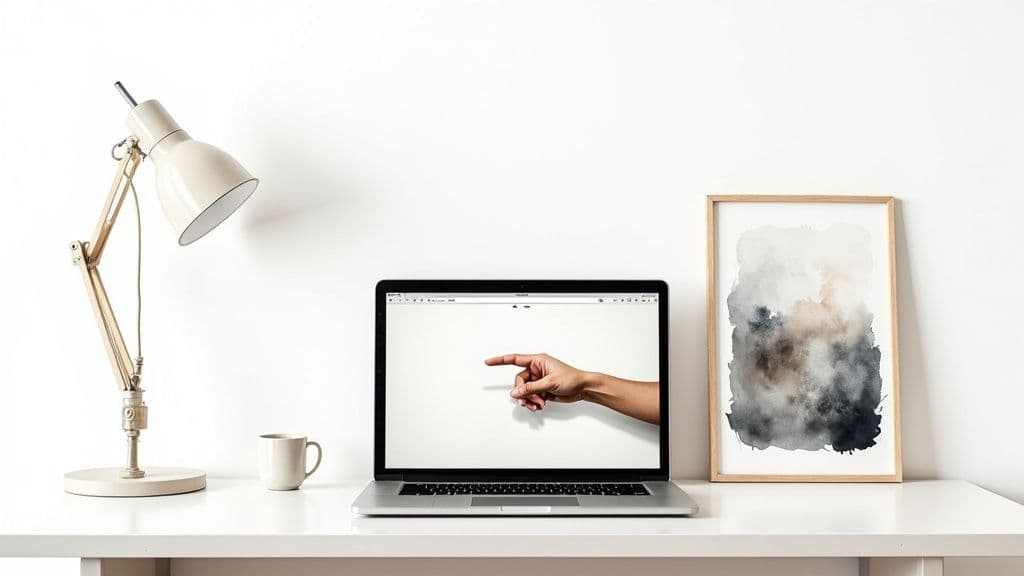
In an ever-crowded online world, that first impression is make-or-break. Crisp, professional images instantly signal that you’re credible and you care about the details. It makes your brand feel more established and trustworthy. Ultimately, a good photo has the power to stop someone mid-scroll, pull them into your story, and simplify a complex idea in a heartbeat.
The psychological effect here is huge. Our brains process visuals 60,000 times faster than text, which means a striking image can forge an emotional connection before your visitor has even read a single word. That’s often the difference between someone leaving your website immediately and someone who decides to stick around and see what you’re all about.
This shift to visual-first content isn’t just a passing fad; it’s a fundamental change in how we all consume information. We're seeing this play out right here in the UK, where the appetite for accessible, professional-grade imagery is growing at an incredible pace.
In fact, the UK stock images market is set for some serious growth, with forecasts predicting a market size increase of USD 128.3 million during 2023-2028. This boom is being fuelled by the sheer popularity of visual content in digital marketing, which in turn drives the need for high-quality, royalty-free images that businesses can use without any legal headaches.
This leaves creators and businesses with a real challenge: how do you get your hands on professional, legally-sound images without blowing the budget? This is exactly why the best free stock image sites have become such a vital tool for so many of us.
Finding the perfect image is only half the battle. To really get the most out of it, you need to make sure it’s properly prepared for the web. Huge, uncompressed image files can slow your page loading speed to a crawl, which is bad news for both your visitors and your search engine rankings.
So, when you grab those fantastic visuals from free stock sites, it’s crucial to understand the proven strategies to optimize images for web for speed and SEO. Taking this extra step ensures your beautiful visuals actually help your site’s performance, rather than hinder it, paving the way for a much stronger online presence.
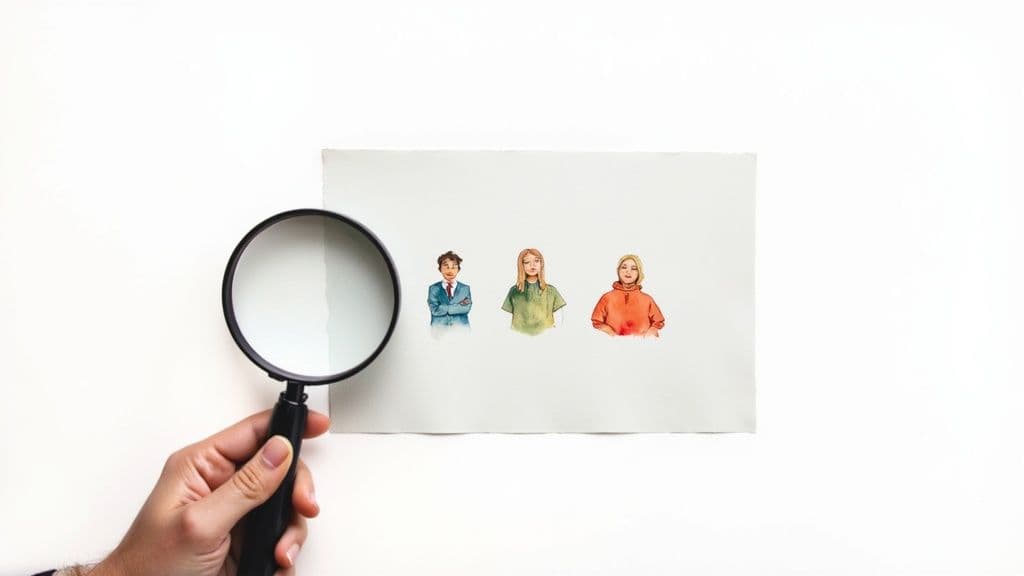
Before you jump in and start downloading from even the best free stock photo sites, it’s worth taking a moment to get your head around the rules. Let's be honest, "image licensing" sounds a bit daunting, but it’s really just a set of permissions explaining how you can legally use someone else's work.
Getting this right isn't just about sidestepping legal hot water; it’s about showing respect for the photographers and artists who share their work. A few minutes spent checking the licence now can save you a world of pain later on.
Most free image sites lean on Creative Commons (CC) licences. Think of it as a simple framework that lets creators share their work with clear, easy-to-understand conditions. The catch is, not all CC licences are created equal, so the devil is in the details.
You'll come across different versions, each with its own rules about crediting the creator (attribution), making changes, and using the image for business. The most generous and common one you’ll find is CC0 (Creative Commons Zero).
Key Takeaway: A CC0 licence is the holy grail for users. It means the creator has waived all their rights, effectively placing the image in the public domain. You’re free to copy, change, and use it for anything you want—even commercially—without asking permission or giving credit.
While CC0 is a dream come true, you’ll definitely run into other terms. Knowing what they mean is your key to staying on the right side of the law.
Here’s a quick rundown of what to watch for:
These visual cues are a great shortcut to understanding your obligations. For example, the little person icon means you need to give attribution, while a crossed-out dollar sign means no commercial use allowed.
So, how does this play out in practice? Let's say you find the perfect image under a CC0 licence. You can download it, slap your logo on it, and use it in a paid Facebook ad campaign. No problem.
Now, imagine you find a different image licensed as "CC BY-NC" (Attribution-NonCommercial). You could feature it in a personal blog post, as long as you properly credit the photographer. However, you couldn't use that same photo on a t-shirt you plan to sell. It always pays to double-check before you hit download.
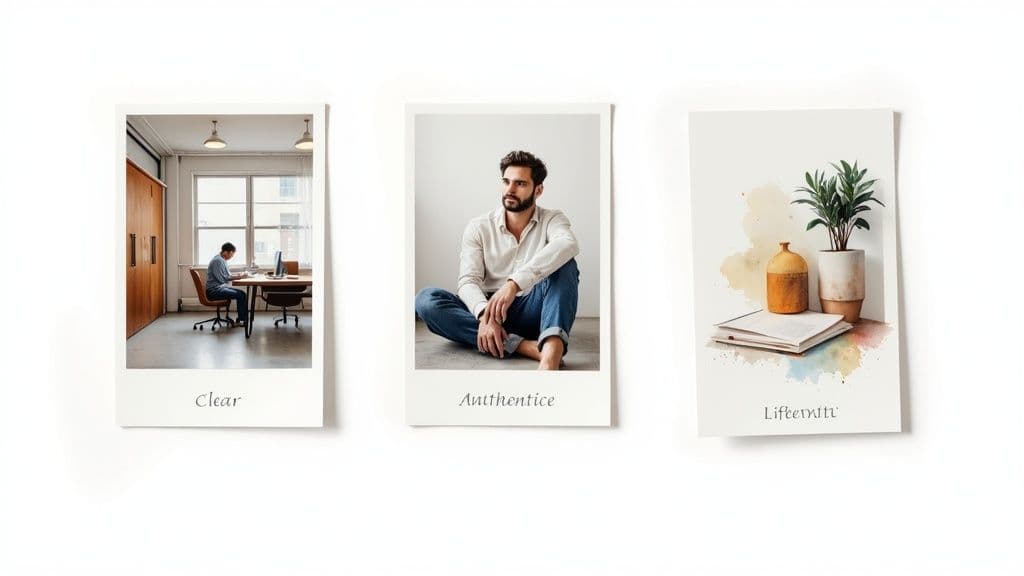
Alright, now that we’ve got the hang of licensing, let's get to the fun part—the platforms themselves. With so many free image sites out there, it’s easy to feel a bit lost. The secret isn't just finding a list of options; it's about matching a site's personality and strengths to what you actually need.
Think about your brand. Is it polished and corporate, or more artistic and edgy? Do you need a massive, all-purpose library, or a smaller, hand-picked collection of high-fashion shots? The best sites aren't interchangeable. Each one has its own vibe and is built for a specific purpose.
In this breakdown, we’ll look at the top contenders through a lens that actually matters: the size and style of their library, the overall aesthetic, how good their search is, and how clear their licensing is. Seeing them side-by-side will give you the confidence to pick the right one, every single time.
Unsplash has carved out a niche for itself by focusing on quality over quantity. Yes, its library of over six million images is huge, but what really sets it apart is its modern, artistic feel. These are not your dad's cheesy stock photos.
Browsing Unsplash feels more like wandering through a high-end photography gallery. The images often have a moody, atmospheric quality, with a real focus on creative composition and authentic moments. It’s an incredible resource for brands aiming for a sophisticated, visually-led identity.
If you’re a lifestyle blogger, run a creative agency, or manage social media for a design-conscious brand, Unsplash should be your first port of call. Its search is great, and the curated collections—like "Textures & Patterns" or "Current Events"—are brilliant for sparking ideas. All photos fall under the Unsplash licence, which is incredibly generous, allowing commercial use without needing to give credit.
Key Differentiator: Unsplash is the undisputed champion for high-quality, artistic photography that looks like it was custom-shot. It delivers an emotional depth that’s hard to find elsewhere.
Pexels hits that sweet spot between quality and variety. Much like Unsplash, it gives you a huge collection of high-resolution images that are free for commercial use under its own simple licence. The style is clean and contemporary, though maybe a touch more commercial-friendly than Unsplash.
Where Pexels really comes into its own is its sheer versatility. You can find everything from professional business settings and authentic lifestyle shots to stunning nature scenes. This makes it a reliable workhorse for anyone creating content across a wide range of topics.
But the real game-changer is its impressive library of free stock videos. For marketers and social media managers needing to create engaging video content, this is an absolute goldmine. The video quality is consistently high, and the library is just as easy to search as the photos.
When it comes to the sheer volume and diversity of what’s on offer, Pixabay is in a class of its own. It's a favourite among UK users, boasting a massive library of over 4.2 million assets. And that’s not just photos—it includes illustrations, vectors, videos, music, and sound effects, all under a simple licence that allows free use without attribution.
This all-in-one approach makes Pixabay incredibly efficient. A blogger can grab a featured image, a vector for an infographic, and background music for a video, all in one place. While the artistic quality might not always hit the curated heights of Unsplash, the library is so enormous you can almost always find what you need.
Its search function is powerful, letting you filter by media type, orientation, and even colour—perfect for matching visuals to a specific brand palette. For anyone who needs a wide range of creative assets without juggling multiple sites, Pixabay is a top contender.
Burst is a free stock photo site from Shopify, and it was built with one group in mind: entrepreneurs. This focus is clear from the moment you land on the site, with collections heavily geared towards modern business niches.
You'll find high-quality image packs centred on specific industries like "fitness products," "online shopping," or "working from home." This makes it incredibly easy for small business owners to find professional, on-brand visuals for their websites, product pages, and marketing campaigns.
The imagery on Burst is clean, bright, and commercially focused. While some photos are under the CC0 licence, most are covered by Shopify’s own photo licence, which gives you broad commercial usage rights without needing to credit anyone.
If you run an e-commerce store or a small business, Burst is made for you. It takes the guesswork out of finding images that are not only high-quality but also directly relevant to your commercial goals.
To make things even clearer, here’s a side-by-side look at the key features of these platforms. This table should help you quickly pinpoint the best fit for your immediate needs. Remember, understanding these nuances is key to choosing the most efficient tool for your workflow. For a deeper dive into making sure you're using images legally, check out our guide on finding copyright-free images for websites.
| Site Name | Approx. Library Size | Primary Licence Type | Best For (Use Case) | Attribution Required? |
|---|---|---|---|---|
| Unsplash | 6+ million photos | Unsplash Licence | Artistic, editorial, and lifestyle visuals for design-focused brands. | No |
| Pexels | 3+ million photos & videos | Pexels Licence | Versatile everyday use, especially for projects requiring free stock video. | No |
| Pixabay | 4.2+ million assets | Simplified Pixabay Licence | A one-stop shop for photos, vectors, illustrations, and music. | No |
| Burst | Thousands | Shopify's Photo Licence | E-commerce, product marketing, and small business websites. | No |
This table really highlights that your choice should be driven by what you need to do. A creative agency might live on Unsplash for its mood boards, while a busy marketing team might lean on Pixabay for the sheer breadth of its library.
Picking the "best" free stock image site isn’t about crowning a single winner; it’s about building a toolkit. You’ll probably find your go-to platform changes from one project to the next.
Ultimately, the right platform is the one that saves you time and delivers visuals that connect with your audience. By understanding the unique character of each site, you can streamline your creative process and always find the perfect image for the job.
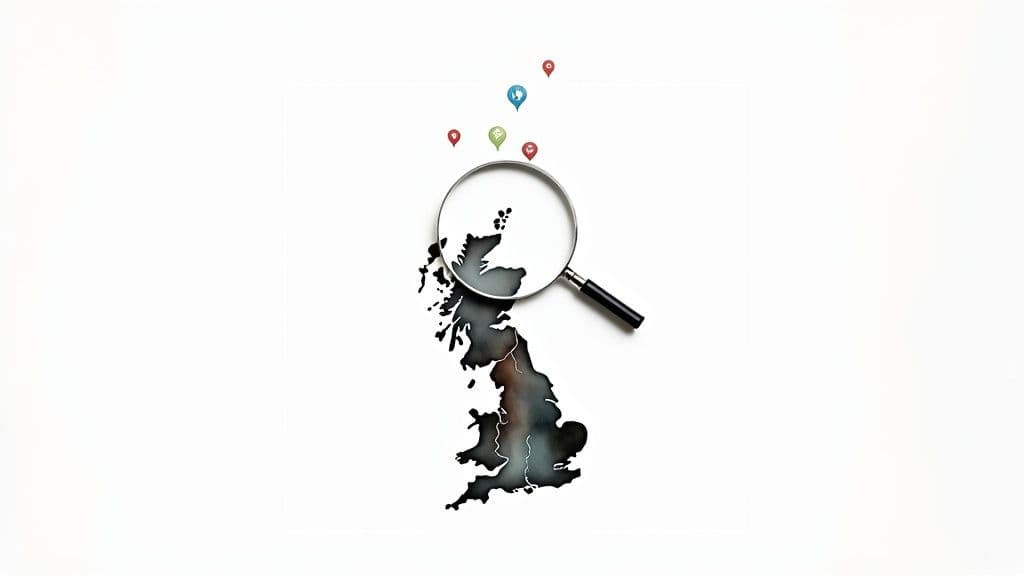
Let's be honest, the biggest downside to using popular free stock image sites is seeing the same photos everywhere. You know the ones. When you're trying to build a distinct brand, using a generic visual your audience has already scrolled past on ten other websites just won't cut it. This is a huge problem for niche projects that need specific, authentic, or even locally relevant imagery.
To really stand out, you've got to dig a little deeper than the homepage. This means getting creative with your search terms and exploring platforms that cater to specific interests, rather than just the big, general-purpose sites. The goal is to find visuals that don't just fill a space but actually add something meaningful to your content.
Some of the best stock photo sites are the ones that aren't trying to be everything to everyone. They concentrate on a particular theme, which means their collections have a real depth and relevance that the bigger players often lack.
Here are a few great examples of niche-focused sites:
By looking for these specialist libraries, you’re tapping into a pool of images that are far less common and much more aligned with your subject. It's a smart shortcut to making your visuals feel hand-picked for your project.
For businesses and creators based in the UK, finding images that feel genuinely British can be a proper struggle. So many stock photos feature American cityscapes or landscapes that just don't feel right for a UK audience. This is where dedicated local resources are a game-changer.
A brilliant option is FreeImages.co.uk, a platform launched specifically for the UK market. It boasts a collection of over 18,000 images across 89 categories, covering everything from education and technology to office life, all with an unmistakably British feel. For UK bloggers and businesses wanting to connect with a local audience, it’s an essential bookmark.
Even on huge platforms like Pexels or Unsplash, you can still unearth unique gems by thinking more like a photographer. Instead of a basic search like "business meeting," try more specific or conceptual terms. Think "collaborative workspace," "focused brainstorming," or "startup culture." The results are often far more interesting.
Another powerful option is to move beyond photography entirely. The boom in AI image generation gives you a fantastic way to create visuals that are 100% unique. Instead of searching for an image, you describe it, giving you almost infinite control. You can learn more about how it works in our guide on how to generate images with AI.
For very specific projects, particularly in e-commerce, you might need to source product visuals directly. In these cases, guides on how to download images and videos from AliExpress can be incredibly useful. Ultimately, finding unique images is about combining clever searching with a willingness to explore beyond the obvious, ensuring your brand’s visual identity is as unique as your voice.
Choosing the best free stock image site isn't about finding one platform to rule them all. It's more like building a toolkit. You need to know which tool to grab for which job. The right choice always comes down to your project's goals, your brand's personality, and who you're trying to talk to. After all, a photo that looks fantastic on a corporate blog could fall completely flat on a trendy Instagram feed.
Figuring this out upfront is a massive time-saver. Instead of scrolling for hours through images that just don't fit, you can head straight to the source that’s most likely to have what you need. Let’s look at a few common situations to see how this plays out in the real world.
Your mission here is to build trust and look professional. You're after clean, high-resolution images of modern office life, people collaborating, and technology in use. The key is finding photos that look polished without feeling like cheesy, staged stock photos. You need authenticity, but with a professional edge.
For this job, I'd point you towards Pexels or Pixabay.
On the flip side, you’d want to steer clear of a site like Gratisography for this. Its quirky, artistic style is fantastic for other uses, but it would probably clash with the professional, trustworthy vibe most corporate sites are going for. It’s all about matching the platform to the message.
Okay, the goal here is totally different. You need to stop people mid-scroll. Your images have to be eye-catching, atmospheric, and create an emotional connection to build a strong aesthetic on a platform like Instagram. A generic stock photo will just get lost in the feed.
Your first stop should absolutely be Unsplash.
Unsplash is the king of moody, high-concept photography. The images often feel like they’re from a custom photoshoot, not a stock library. I love browsing its curated collections for inspiration; they’re perfect for discovering images that tell a story and capture a specific feeling, which is exactly what you need to build a visually cohesive feed.
If you're a content creator churning out multiple blog posts a week, your biggest needs are variety and volume. You need a deep well of images covering everything from tech and business to travel and lifestyle. You just don't have time to spend hours hunting for that one perfect shot.
In this case, Pixabay is the clear winner.
To make it even clearer, here’s a quick breakdown of which site to choose based on your main goal:
| Your Primary Goal | Recommended Site | Why It's the Best Fit |
|---|---|---|
| Corporate Professionalism | Pexels | Clean, modern, and relatable business-focused imagery. |
| Artistic Social Media | Unsplash | Curated, high-fashion, and emotionally engaging photos. |
| High-Volume Blogging | Pixabay | Massive library with photos, vectors, and illustrations. |
| E-commerce & Products | Burst by Shopify | Niche-specific collections for entrepreneurs and online stores. |
Ultimately, choosing the right site is a strategic move. When you match the platform’s strengths to what your project actually needs, you go from just finding a free image to selecting the perfect visual—one that truly elevates your content and connects with your audience.
Let's be honest, diving into the world of free stock images can feel a bit like wading through legal jargon. What's a CC0 licence? Do I have to credit the photographer? Can I really use this on my business's homepage? It’s easy to get bogged down.
To clear things up, I've put together answers to the questions I hear most often. Think of this as your practical, no-nonsense guide to using free photos confidently and correctly, so you can get back to the fun part: creating something brilliant.
Yes, for the most part, you absolutely can! The best free stock image sites usually operate under licences like Creative Commons Zero (CC0) or have their own terms that explicitly allow commercial use. That means you're clear to use their photos for your marketing materials, website banners, social media posts, and more without spending a penny.
But here’s my pro tip: always, always double-check the licence for the specific image you want to use before you hit download. Sometimes, a platform might have a few odd rules, like not allowing a photo to be used in a logo or resold on a t-shirt. A quick two-second check of the terms will give you total peace of mind.
This is a classic point of confusion, but the difference is actually quite straightforward.
On the best free stock image sites, you'll find that most photos are offered under a royalty-free licence that works almost exactly like a copyright-free one, giving you the freedom you need for your projects.
The Bottom Line: While the legal definitions are different, for your day-to-day needs, both royalty-free and copyright-free images from reputable sites will give you what you're looking for. Just keep an eye on the specific licence terms and you'll be golden.
This one comes down entirely to the licence. If an image is under a CC0 licence or in the public domain, you are not legally required to give any credit. You can use it without mentioning the photographer or the platform.
That said, giving a shout-out is always a fantastic gesture. A simple "Photo by [Artist's Name] via [Platform Name]" is a small way to show your appreciation and support the amazing photographers who share their work for free. Some sites might have specific licences where attribution is mandatory, so it's a detail worth checking. When in doubt, it never hurts to give credit.
Tired of searching for the perfect image? What if you could just create it? With Instastock, you can generate completely unique, high-quality images in seconds with AI. Just describe what you're picturing, tweak it with simple text, and get a visual that’s 100% yours—no licences or restrictions to worry about. Try Instastock for free and create your first five images today.

Discover the best AI tools for marketing. We compare 12 top platforms with features, pricing, and pros/cons to help you automate and enhance your strategy.
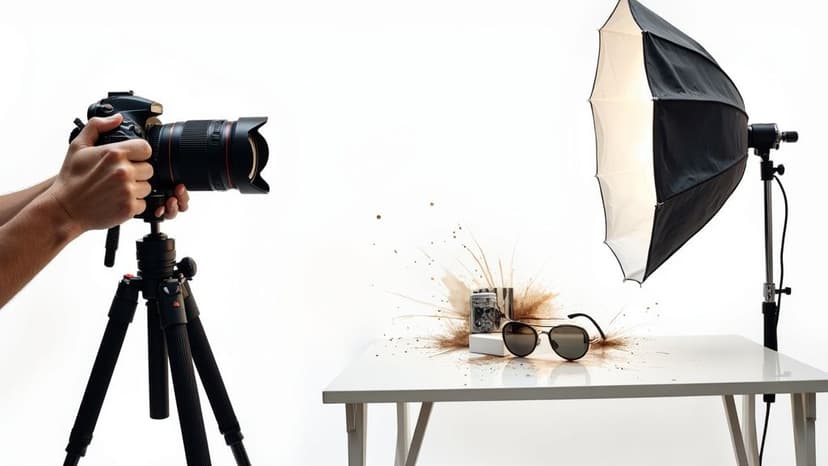
Master product photography for ecommerce with our friendly guide. Learn to plan, shoot, and edit stunning product photos that drive sales for your online store.
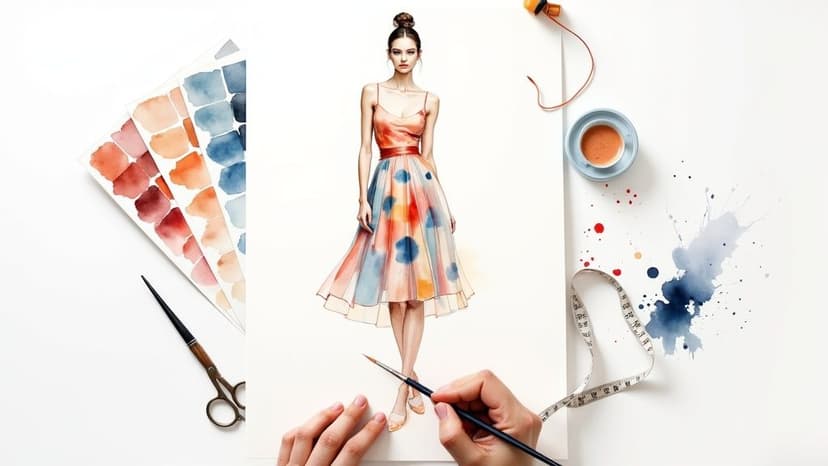
Discover how a fashion illustration template can transform your design workflow. Learn to choose, use, and elevate templates with AI for professional results.